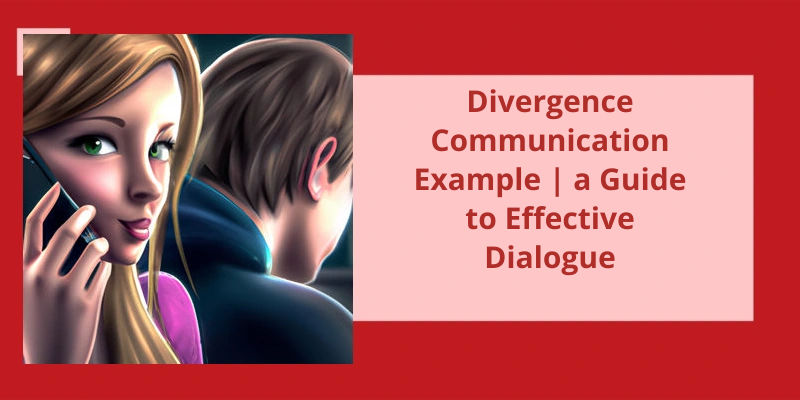Human communication is an intricate and complex process that involves numerous factors such as cultural background, linguistic abilities, and personal preferences. One such factor that plays a significant role in shaping the communication style of individuals is divergence. Divergence refers to the intentional deviation from the standard language norms and the adoption of distinctive features that highlight one's unique identity. This can take various forms, such as maintaining one's regional accent and dialect, using slang words or phrases, or even adopting a different tone or style of speech. One of the most common examples of divergence communication is a person who intentionally emphasizes their unique regional accent and dialogue rather than trying to conform to the linguistic norms of the other person. This can serve as a way for individuals to assert their individuality and authenticity, as well as maintain a sense of distance and independence from others.
What Is Divergence in Communication?
Divergence is often seen in intercultural communication and highlights the differences between cultures. This can be seen in the use of different languages, slang words, and nonverbal behaviors. Divergence can help individuals from different cultures to maintain their distinctiveness and avoid assimilation.
In addition, divergence can be used as a power strategy. In a situation where there’s a power difference between communicators, the individual with less power may use divergence to assert their individuality and resist assimilation into the dominant culture. This can be seen in situations of social inequality, such as between a supervisor and subordinate or between different social classes.
Another example of divergence can be seen in group dynamics. When group members diverge in their communication styles, it can lead to conflicts and misunderstandings. This is particularly true in multicultural groups, where members may have different communication norms and expectations. In these situations, it’s important for individuals to recognize and understand these differences to effectively communicate and achieve common goals.
Divergence can also be used as a means of expressing identity. By intentionally using verbal and nonverbal behaviors that are different from the dominant group, an individual can assert their identity and avoid assimilation. This can be seen in situations where there’s a strong sense of cultural heritage or pride, such as in the LGBTQ+ community or in minority groups.
Finally, divergence can be used as a form of resistance. In situations where an individual disagrees with the dominant culture or ideology, they may intentionally use divergence to resist assimilation and challenge the status quo. This can be seen in political activism, social movements, and other forms of protest.
Divergence in communication is a complex phenomenon that can serve many different functions. By understanding and recognizing these differences, we can build stronger, more inclusive communities that value diversity and individual expression.
Conclusion
While it may seem counterintuitive to intentionally emphasize one's own differences, such as a regional accent or unique dialect, it can actually serve as a way to establish a sense of identity and individuality in a conversation. Similarly, using divergence to maintain distance from another person can be a useful tool for setting boundaries and preserving a sense of personal space. Ultimately, effective communication requires a balance between convergence and divergence, as well as a willingness to adapt and adjust one's approach depending on the particular situation and context.






